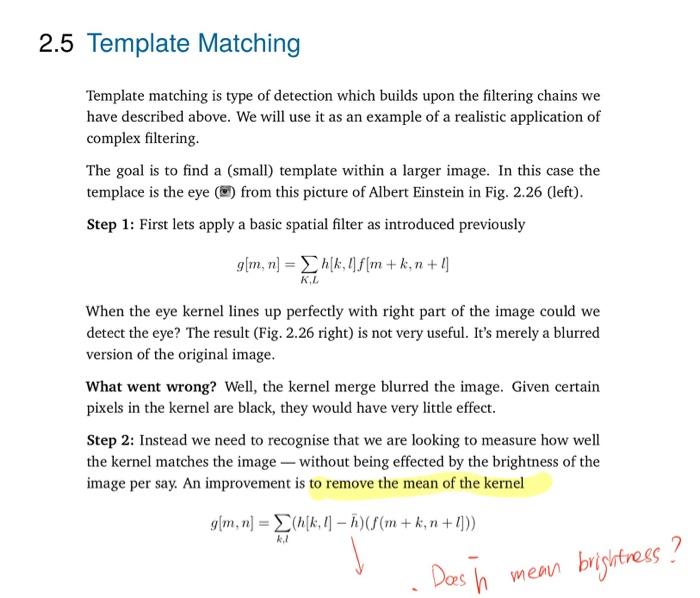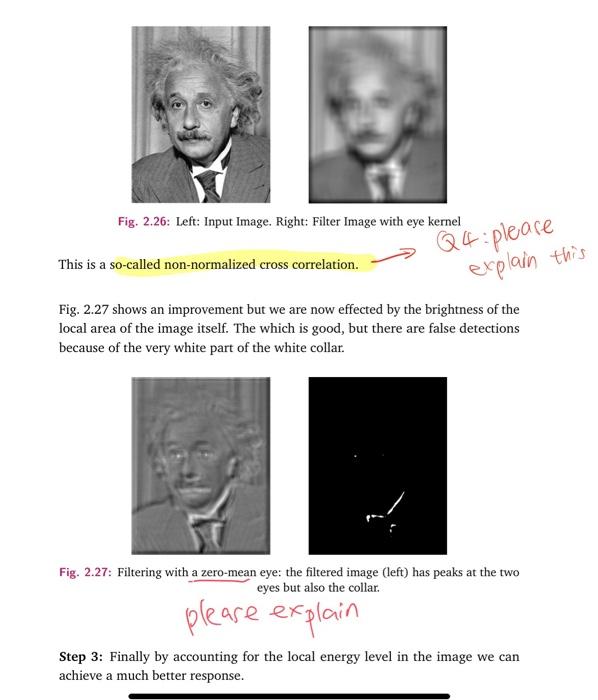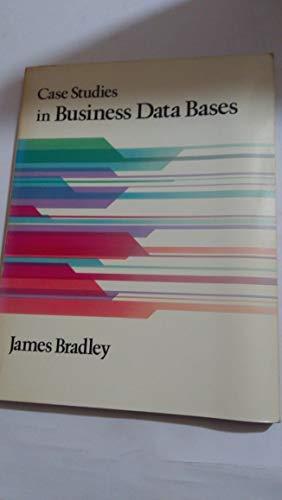Answered step by step
Verified Expert Solution
Question
1 Approved Answer
computer vision please explain all my doubts in detail, will rate, thanks Don't comment! please explain this equation in detail. why we use normalized cross-correlation
computer vision
please explain all my doubts in detail, will rate, thanks 





Don't comment!
please explain this equation in detail. why we use normalized cross-correlation The normalized cross-correlation introduces a factor which subtracts off the mean local image patch fm. and also scales the response by a quadratic factor Ex. (h|k, 1) - h)f(m + k,n+ 11 - fm.n)) (Ex/(h[k.1] - A)?(f(m+k, n + 11 - fm,n))2)0.5 Now we can see that there are two true detections in the image at the two eyes. Note: that this template matcher would not be successful if the image resolutions were to change relative to one another. (a) Input Image (more (b) Normalized Cross (c) Threshold image w. difficult) Correlation correct detections Fig. 2.28: Filtering with a normalized cross-correlation Fig. 2.26: Left: Input Image. Right: Filter Image with eye kernel 24 pleare This is a so-called non-normalized cross correlation. explain this Fig. 2.27 shows an improvement but we are now effected by the brightness of the local area of the image itself. The which is good, but there are false detections because of the very white part of the white collar. Fig. 2.27: Filtering with a zero-mean eye: the filtered image (left) has peaks at the two eyes but also the collar. exo Step 3: Finally by accounting for the local energy level in the image we can achieve a much better response. please explain this equation in detail. why we use normalized cross-correlation The normalized cross-correlation introduces a factor which subtracts off the mean local image patch fm. and also scales the response by a quadratic factor Ex. (h|k, 1) - h)f(m + k,n+ 11 - fm.n)) (Ex/(h[k.1] - A)?(f(m+k, n + 11 - fm,n))2)0.5 Now we can see that there are two true detections in the image at the two eyes. Note: that this template matcher would not be successful if the image resolutions were to change relative to one another. (a) Input Image (more (b) Normalized Cross (c) Threshold image w. difficult) Correlation correct detections Fig. 2.28: Filtering with a normalized cross-correlation Fig. 2.26: Left: Input Image. Right: Filter Image with eye kernel 24 pleare This is a so-called non-normalized cross correlation. explain this Fig. 2.27 shows an improvement but we are now effected by the brightness of the local area of the image itself. The which is good, but there are false detections because of the very white part of the white collar. Fig. 2.27: Filtering with a zero-mean eye: the filtered image (left) has peaks at the two eyes but also the collar. exo Step 3: Finally by accounting for the local energy level in the image we can achieve a much better response Step by Step Solution
There are 3 Steps involved in it
Step: 1

Get Instant Access to Expert-Tailored Solutions
See step-by-step solutions with expert insights and AI powered tools for academic success
Step: 2

Step: 3

Ace Your Homework with AI
Get the answers you need in no time with our AI-driven, step-by-step assistance
Get Started


